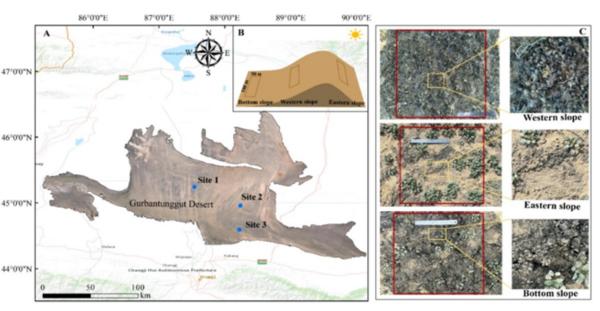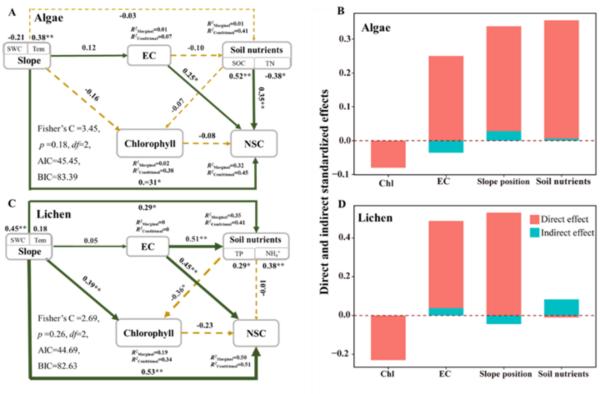Nonstructural carbohydrates (NSCs) provide energy for metabolic processes in plans, and play a key role for plants' growth, defense and osmoregulation. However, the regulation of NSC in biological soil crusts across different slope positions remains unclear.
In a recent study published in Plant and Soil, a research team led by Prof. ZHANG Yuanming from the Xinjiang Institute of Ecology and Geography (XIEG) of the Chinese Academy of Sciences, investigated the effect of slope position on NSCs in biological soil crusts in the Gurbantunggut Desert, China.
The researchers collected 90 samples of algae and lichen crusts from three sampling sites (the slope bottom, the western slope, and the eastern slope) in the Gurbantunggut Desert.
They used one-way and two-way ANOVA (Analysis of Variance) to examine the effects of biocrust type and slope position on NSCs, and constructed structural equation models to explore the direct and indirect effects of slope positions, and soil properties on NSCs.
The researchers found that slope position had a greater impact on NSC content in lichen crusts than algae crusts. Lichen crusts at the slope bottom were found to have the highest levels of NSCs, while NSC levels in algae crusts peaked on the eastern slope.
Besides, researchers found that slope positions influenced NSC indirectly through soil properties, with soil nutrients being crucial for algae crusts and soil water content and temperature for lichen crusts.
The study provides new insights into the ecological adaptation mechanisms of biocrusts, conducive to the stabilization of desert ecosystems under global climate change.(From XIEG)

Figure 1: Stampling sites in the Gurbantunggut Desert, China. (Image by XIEG)

Figure 2: Direct and indirect drivers of the NSC contents of the algae and lichen crusts (Image by XIEG)
